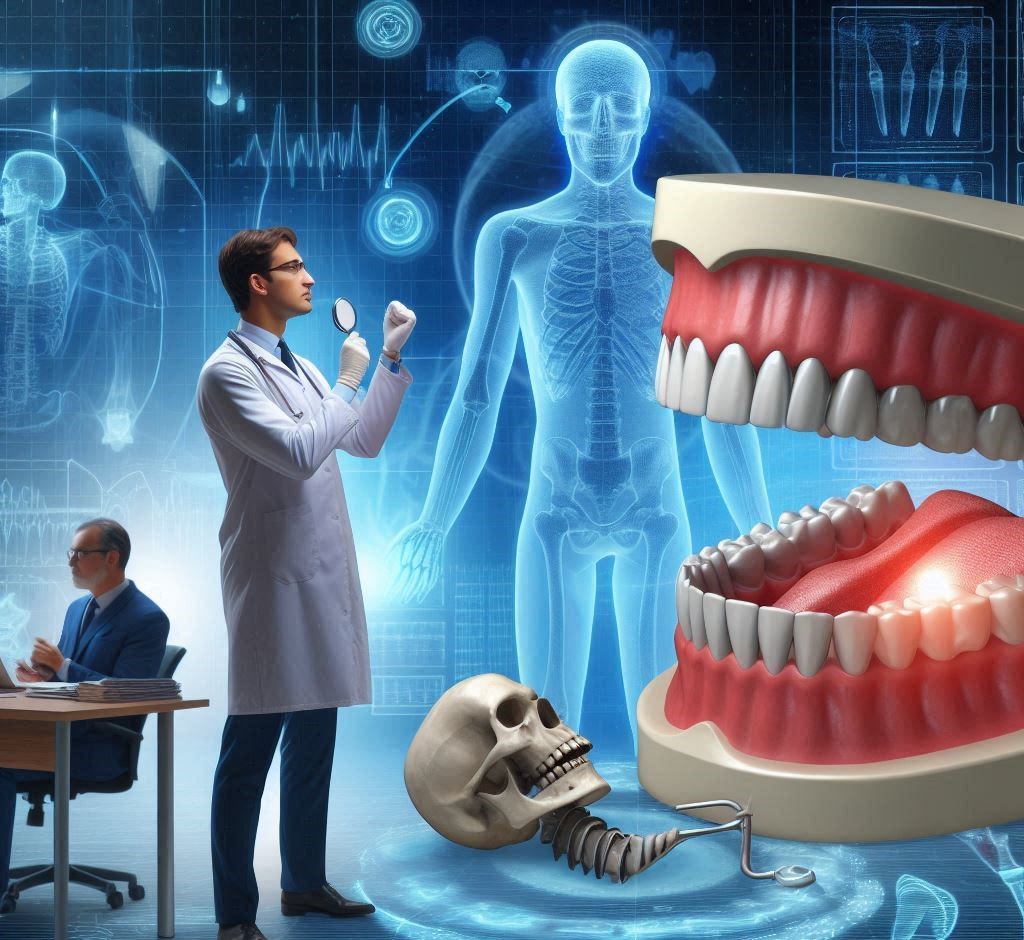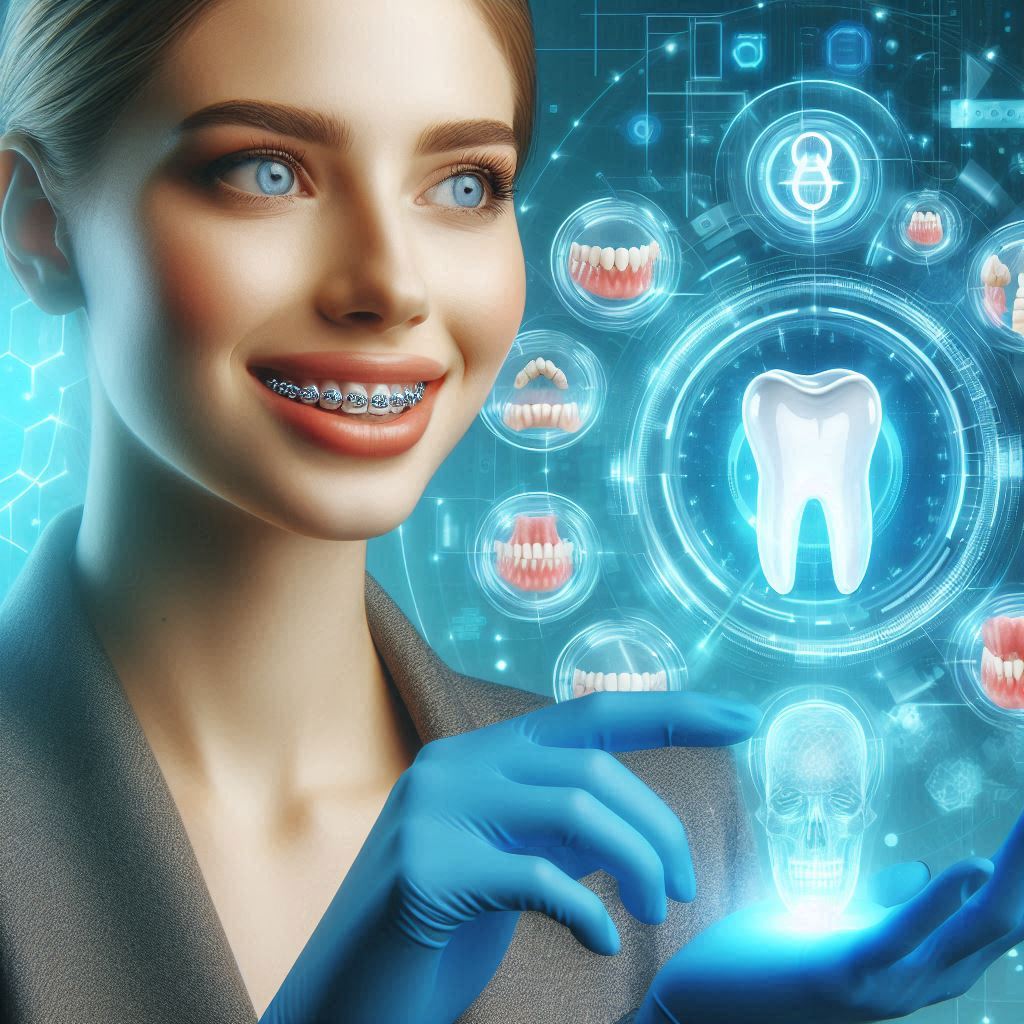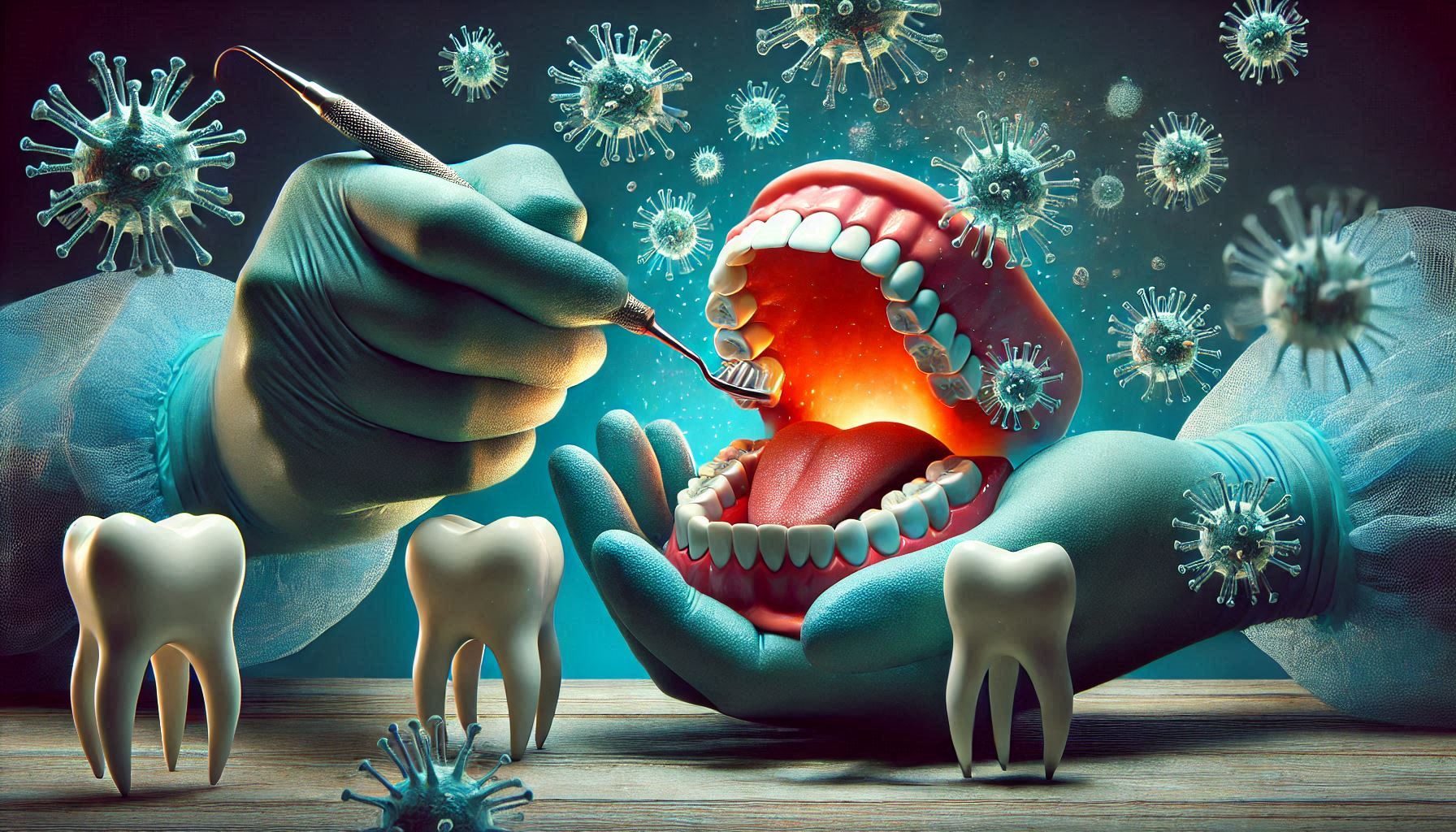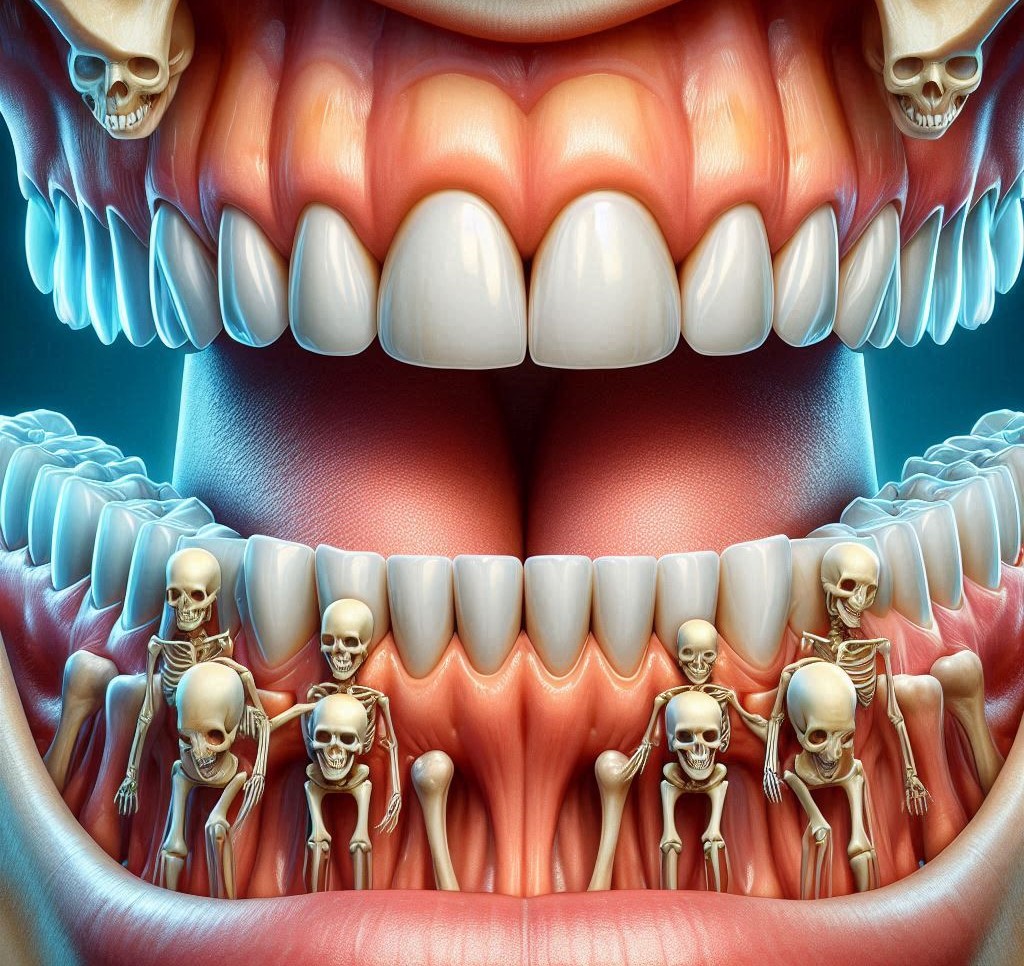Bone growth in the oral and jaw regions plays a fundamental role in shaping the human face and facilitating essential functions like speaking, chewing, and breathing. Abnormalities in bone growth, however, can have profound and far-reaching effects on both aesthetics and functionality. While bone growth is generally a natural, gradual process, certain disorders or disruptions can cause excessive or irregular bone growth, leading to misalignment of the teeth, pain, and other oral health problems. This article delves into the intricate mechanisms behind abnormal bone growth, how it affects oral health, and the resulting problems individuals may experience.
As bone development and jaw alignment are intricately linked, disruptions in one area can have cascading effects. Teeth may become misaligned, leading to difficulty chewing, speaking, and performing everyday activities. Simultaneously, structural changes in the jaw can result in persistent discomfort, including headaches, jaw pain, and even issues with the temporomandibular joint (TMJ). In severe cases, the aesthetic appearance of the face can also be affected, leading to emotional and psychological distress. This article aims to uncover how abnormal bone growth in the jaw region can cause a variety of oral health problems, outlining the causes, symptoms, diagnosis, and available treatments.
Understanding Bone Growth in the Jaw and Oral Cavity
Bone Formation and Development
The jaw, or mandibular bone, is a critical structure that supports the teeth and facilitates chewing and speaking. Similarly, the maxilla (upper jaw) plays a significant role in facial aesthetics and function. Bone growth in these areas is an ongoing process that begins during fetal development and continues through childhood and adolescence. In children, the alveolar bone—specifically the bone that holds the teeth—grows and develops alongside the eruption of teeth. As individuals mature, the bones in the face and jaw undergo reshaping and remodeling in response to functional needs.
Bone growth in the jaw is influenced by a variety of factors, including genetic inheritance, hormonal regulation, and environmental influences. The rate of growth tends to decrease with age, particularly after puberty when the growth plates in the jaw bones fuse. However, in certain individuals, abnormal bone growth can occur, resulting in an imbalance in the proper alignment and development of the jaw and teeth.
Types of Abnormal Bone Growth
Abnormal bone growth in the jaw can manifest in various ways. Some of the most common forms include:
- Hyperplasia: This is a condition in which there is excessive bone growth. The bone overgrows in response to certain stimuli, leading to enlargements or growths that interfere with normal function. Hyperplasia can be localized or generalized in the jaw.
- Osteomas: These are benign, slow-growing tumors that can develop on the jawbones. Osteomas typically do not spread to other areas but can cause significant discomfort and disrupt the alignment of teeth if they grow in areas near tooth roots or the alveolar ridge.
- Bone Spurs: Also known as osteophytes, bone spurs are bony projections that form along the edges of bones. These projections often develop in response to joint degeneration but can also form in the jawbone. Bone spurs in the jaw can cause pain, limit jaw movement, and lead to teeth misalignment.
- Fibrous Dysplasia: A rare disorder in which normal bone and marrow are replaced with fibrous tissue, resulting in weakened bones that may expand and deform. When fibrous dysplasia affects the jawbones, it can lead to deformities, misalignment of teeth, and facial asymmetry.
- Cherubism: A genetic disorder characterized by abnormal bone growth in the face and jaw. The condition results in the enlargement of the lower part of the face, causing an increased distance between the lower teeth and the upper teeth, leading to misalignment.
How Abnormal Bone Growth Occurs
Abnormal bone growth can be triggered by several factors, including genetic mutations, hormonal imbalances, injuries, or chronic inflammation. Common causes include:
- Developmental Factors: Some individuals may be genetically predisposed to abnormal bone growth. Certain conditions, such as craniofacial syndromes or genetic disorders, cause abnormal bone development during fetal or childhood growth periods.
- Environmental and Lifestyle Factors: Trauma, such as fractures or infections, can lead to abnormal bone growth. Inflammatory conditions, such as osteomyelitis (bone infection), can also result in bone overgrowth as part of the healing process.
- Hormonal Imbalances: Growth hormones or other hormones regulating bone development can, when imbalanced, cause excessive or insufficient bone growth. For example, conditions like acromegaly, caused by an overproduction of growth hormone, can result in abnormal enlargement of the jaw bones.
- Infection or Injury: Severe infections, like osteomyelitis, or physical trauma, such as accidents or surgery, can trigger abnormal bone growth. In response to injury or infection, bone tissue may overgrow as part of the healing process, potentially resulting in a misalignment of the jaw and teeth.
How Abnormal Bone Growth Interferes with Teeth Alignment
Jaw Misalignment
Abnormal bone growth can directly affect the position of the jaw itself. The shape, size, and position of the jaw influence how the teeth align and fit together. When bone growth is excessive or uneven, it can cause misalignment of the upper and lower jaws, leading to conditions like overbite, underbite, crossbite, or open bite. These misalignments can disrupt normal biting and chewing functions.
- Overbite: A condition where the upper front teeth significantly overlap the lower front teeth. Excessive growth of the upper jaw bone (maxilla) can cause this misalignment.
- Underbite: A condition in which the lower jaw protrudes beyond the upper jaw. This often results from abnormal growth of the mandible (lower jaw bone).
- Crossbite: This occurs when the upper teeth rest inside the lower teeth, which can happen if there is abnormal growth in either the upper or lower jaw bones.
- Open Bite: A situation where the upper and lower teeth do not meet when the mouth is closed. This misalignment can result from abnormal bone growth in the maxilla or mandible.
Teeth Movement and Tooth Crowding
Abnormal bone growth does not only affect the jawbones but can also influence the alignment of the teeth. When bone growth in the jaw occurs in a non-uniform or excessive manner, it can crowd the teeth or push them out of their natural alignment. For instance:
- Crowded Teeth: As the jawbone grows abnormally, it may not provide enough space for the teeth to erupt properly. This can lead to crowded teeth that overlap or twist.
- Gaps Between Teeth: Conversely, if the bone grows too much in certain areas, it may push the teeth apart, creating gaps between them.
Abnormal bone growth can also disrupt the timing of tooth eruption. Normally, permanent teeth erupt in a specific order, but excessive bone growth or improper bone support can delay or prevent certain teeth from emerging properly.
Occlusion Problems
The term “occlusion” refers to the way the upper and lower teeth fit together when the mouth is closed. Abnormal bone growth in the jaw can significantly impact this relationship. When the bone structure changes, it can cause the teeth to move into abnormal positions, resulting in malocclusion. This can lead to uneven wear on the teeth, difficulty chewing, and problems with speech.
Malocclusions may cause:
- Tooth Wear: Misalignment leads to uneven pressure on teeth, causing excessive wear or even damage to the enamel.
- Difficulty in Chewing and Speaking: Teeth misalignment often leads to problems with chewing, biting, and speaking. This can reduce the quality of life for those affected.
Pain and Discomfort: A Common Symptom
TMJ Disorder and Pain
One of the most common complications of abnormal bone growth in the jaw is temporomandibular joint (TMJ) dysfunction. The TMJ is the hinge-like joint that connects the lower jaw (mandible) to the skull. Abnormal bone growth can cause changes in the structure or movement of the TMJ, leading to dysfunction.
Common symptoms of TMJ disorders caused by abnormal bone growth include:
- Jaw Pain and Tenderness: A feeling of pain or tenderness in the jaw, especially when chewing or speaking.
- Clicking or Popping Sounds: When opening or closing the mouth, the TMJ may produce clicking or popping sounds due to abnormal bone growth affecting the joint’s smooth operation.
- Jaw Locking: In some cases, abnormal bone growth can cause the jaw to lock in a specific position, leading to difficulty opening or closing the mouth.
TMJ disorders caused by abnormal bone growth can significantly impact daily life, causing chronic pain, headaches, and limited jaw mobility.
Bone Spurs and Inflammation
Bone spurs are often the result of abnormal bone growth in the jaw. These projections can form along the edges of bones in response to pressure, injury, or inflammation. In the jaw, bone spurs may form near the TMJ, along the jawline, or near the teeth. These bone growths can lead to chronic inflammation and pain.
Symptoms of bone spurs in the jaw include:
- Local Pain and Swelling: When bone spurs rub against surrounding tissues, they can cause localized pain, swelling, and discomfort.
- Restricted Movement: Bone spurs near the TMJ can restrict jaw movement, making it difficult to open or close the mouth fully.
In addition to pain, bone spurs can also cause changes in the bite, leading to issues with teeth alignment.
Other Oral Health Problems Associated with Abnormal Bone Growth
1. Gum Recession and Periodontal Problems
Abnormal bone growth in the jaw can also have negative consequences for gum health. As the bone structure shifts or enlarges, it can lead to gum recession, a condition where the gum tissue pulls away from the tooth. This exposes the tooth roots, leading to increased sensitivity, risk of cavities, and, in severe cases, tooth loss.
Gum recession due to abnormal bone growth can happen for several reasons:
- Changes in the Bone Support: When abnormal bone growth occurs in areas where the gums are attached to the teeth, it can cause the gums to recede. The bone may exert pressure on the gums, pushing them away from the teeth.
- Periodontal Disease: If the abnormal bone growth leads to misalignment, it can make it more difficult to maintain proper oral hygiene. Areas that are harder to reach with a toothbrush may harbor plaque and bacteria, leading to periodontal disease. This can further weaken the bones and gums, causing a vicious cycle of bone loss and gum recession.
- Reduced Bone Density: In some cases, abnormal bone growth (such as with fibrous dysplasia) can lead to bones that are less dense and more susceptible to deterioration. Weakened bone structures can’t support the gums and teeth effectively, increasing the likelihood of gum recession.
As gum recession worsens, it may require extensive periodontal treatments to prevent tooth loss. In severe cases, gum grafts or bone grafts may be necessary to restore the gumline and improve bone support.
2. Difficulty in Eating and Speaking
Misaligned teeth caused by abnormal bone growth can affect several aspects of daily life, including eating and speaking. A misaligned jaw or teeth can create several challenges:
- Chewing Difficulties: If the upper and lower jaws are misaligned, the teeth may not meet properly when chewing. This can lead to uneven or inefficient chewing, difficulty breaking down food, and discomfort during meals. In extreme cases, it may even be painful to chew due to jaw pain or tooth sensitivity.
- Speech Issues: Misaligned teeth can also interfere with speech. Issues like an open bite, where the upper and lower teeth do not touch when the mouth is closed, can cause difficulty in articulating words. Lisping, slurring, or producing unclear speech are common consequences of abnormal bone growth affecting the jaw and teeth.
In addition to impacting communication, these problems can lead to social and emotional challenges for individuals, as they may feel self-conscious about their speech or the way they eat in front of others.
3. Aesthetic Impact
One of the more noticeable effects of abnormal bone growth in the jaw is its potential to change facial appearance. As the jawbone enlarges or shifts, it can result in visible facial asymmetry. This can manifest in several ways:
- Protrusion of the Jaw: If the lower jaw grows abnormally, it may extend beyond the upper jaw, leading to a prominent chin or an exaggerated underbite. This can cause an imbalance in the overall facial appearance.
- Flattened Facial Profile: Conversely, abnormal growth of the upper jaw may lead to a flattened or recessed facial profile, causing the face to appear less pronounced. This is especially noticeable when the maxillary bone fails to grow adequately in the upward direction.
- Swelling and Deformity: Conditions like fibrous dysplasia or cherubism can lead to swelling or enlargement of the jawbones, which in turn causes visible deformities in the face. As the bones grow, the face may take on an unnatural or asymmetrical appearance, which can cause emotional distress, particularly in social or professional settings.
This aesthetic impact can severely affect an individual’s self-esteem, leading to depression or anxiety. In some cases, individuals may seek treatment not only for functional improvement but also for cosmetic restoration.
Diagnosing Abnormal Bone Growth
1. Clinical Examination
The first step in diagnosing abnormal bone growth in the jaw is a thorough clinical examination by a dentist, orthodontist, or oral surgeon. This includes:
- Visual Inspection: The healthcare provider will check for any visible abnormalities in the jaw and facial area, such as swelling, asymmetry, or signs of inflammation. They will also inspect the gums and teeth for signs of misalignment or erosion.
- Physical Palpation: The jaw and facial bones are palpated to check for tenderness, swelling, or irregularities in bone texture. A practitioner may press on certain areas to identify points of discomfort or abnormal bone growth.
- Symptom History: The provider will ask about any symptoms the patient has been experiencing, such as pain, difficulty chewing, or jaw clicking. A history of trauma, previous surgeries, or genetic conditions is also relevant.
2. Imaging Techniques
In most cases, a physical examination alone is not sufficient to fully diagnose abnormal bone growth. Various imaging techniques are used to visualize the bones in the jaw and mouth:
- X-rays: Standard dental X-rays can help identify the presence of bone abnormalities, such as excess bone growth or signs of degeneration. X-rays are commonly used to assess tooth alignment and detect the presence of bone spurs, cysts, or tumors.
- CT Scans (Computed Tomography): For a more detailed view of the bone structure, a CT scan provides cross-sectional images that can identify more subtle abnormalities. It is particularly useful in diagnosing conditions like fibrous dysplasia or cherubism.
- MRI (Magnetic Resonance Imaging): An MRI is used to assess both the bone and soft tissues around the jaw, including muscles and the temporomandibular joint (TMJ). This is helpful in diagnosing conditions that affect the joint, such as TMJ dysfunction, as well as abnormal growths near the TMJ.
- 3D Imaging: Advanced 3D imaging can provide a comprehensive view of the jaw and facial bones, helping doctors plan more accurate treatment strategies.
3. Genetic and Hormonal Testing
In some cases, abnormal bone growth may be the result of genetic factors. Genetic testing can identify specific mutations or inherited conditions that may predispose individuals to disorders like fibrous dysplasia, cherubism, or other rare bone growth disorders.
- Hormonal Testing: Blood tests can assess hormone levels to determine whether imbalances—such as excessive growth hormone—are contributing to abnormal bone growth. This is particularly important in cases of gigantism or acromegaly.
Treatment Options for Abnormal Bone Growth
1. Orthodontic Interventions
For less severe cases of abnormal bone growth, orthodontic treatments may be effective in realigning the teeth and jaw. These include:
- Braces: Traditional braces or clear aligners (like Invisalign) can gradually shift the teeth into proper alignment over time. In some cases, they can help compensate for mild misalignments caused by abnormal bone growth.
- Functional Appliances: These are specialized devices designed to encourage the jaw to grow in the correct direction. For example, a “headgear” might be used to encourage the upper jaw to move into a more favorable position.
- Expander Devices: In cases of narrow palates, devices like a palatal expander can help widen the jaw and make more space for teeth.
2. Surgical Procedures
In more severe cases where bone growth has caused significant jaw misalignment or deformity, surgical intervention may be necessary:
- Orthognathic Surgery (Jaw Surgery): This type of surgery is used to reposition the upper or lower jaw to improve both function and appearance. The procedure can correct bite issues, jaw asymmetry, and facial deformities caused by abnormal bone growth.
- Bone Contouring: In cases of excess bone growth (such as osteomas or fibrous dysplasia), surgery may be performed to remove the abnormal bone and reshape the jaw to restore alignment.
- TMJ Surgery: In cases where abnormal bone growth has impacted the temporomandibular joint, surgery may be required to correct joint dysfunction and alleviate pain or discomfort.
3. Medication for Pain and Inflammation
Managing pain associated with abnormal bone growth may involve:
- Anti-Inflammatory Medications: NSAIDs (Nonsteroidal Anti-Inflammatory Drugs), like ibuprofen, are commonly prescribed to reduce swelling and pain in the jaw.
- Muscle Relaxants: If the abnormal bone growth has led to muscle tension or bruxism, muscle relaxants can help alleviate strain in the jaw muscles.
- Steroid Injections: In some cases, corticosteroid injections into the affected area may help reduce inflammation, particularly for conditions involving bone spurs or TMJ disorders.
4. Physical Therapy for TMJ and Jaw Dysfunction
Physical therapy is an essential treatment for managing TMJ disorders and jaw dysfunction. Techniques may include:
- Jaw Exercises: These exercises help stretch and strengthen the muscles around the TMJ, improving movement and reducing discomfort.
- Massage Therapy: Massaging the jaw muscles can help relieve tension and improve blood circulation, reducing pain and stiffness.
- Mouthguards: For individuals with bruxism (teeth grinding), custom-fitted mouthguards can protect the teeth and reduce jaw tension, preventing further damage.
5. Prosthetic and Cosmetic Solutions
In some cases, patients may choose prosthetic or cosmetic interventions to restore the appearance and function of their teeth and jaw. This might include:
- Dental Crowns or Veneers: For individuals who have experienced damage to their teeth due to misalignment, crowns or veneers can improve both the appearance and function of the teeth.
- Facial Reconstruction: In cases of severe jaw deformities, facial reconstruction may be needed to restore a more balanced and symmetrical appearance.
Conclusion
Abnormal bone growth in the jaw and oral cavity can have significant consequences for oral health and overall quality of life. From misalignment of the teeth to jaw pain, gum recession, and even facial deformities, the impact of abnormal bone growth is far-reaching. It is essential for individuals to seek timely diagnosis and treatment to address these issues before they worsen.
With the right interventions—ranging from orthodontic treatments and medication to more advanced surgical procedures—patients can experience significant improvement in both function and aesthetics. Early diagnosis is key, as the earlier abnormal bone growth is detected, the more effective the treatment options can be.
If you suspect any issues with your bone growth or alignment, don’t hesitate to seek professional advice from an oral health specialist. Whether it’s through advanced imaging, genetic testing, or clinical assessments, healthcare providers can guide you toward the best treatment options to restore your oral health and well-being.
SOURCES
Parker, J. T. & Smith, B. L. (2021). Abnormal bone growth and its implications in craniofacial deformities. Journal of Oral and Maxillofacial Surgery, 79(2), 210-219.
Thompson, R. A. & Davis, H. G. (2019). The role of genetics in the development of jaw malformations: A review. Oral Health Review, 32(4), 333-340.
Lee, M. H. & Kim, S. Y. (2018). Abnormal bone growth and its impact on temporomandibular joint dysfunction. Clinical Orthodontics and Research, 23(1), 75-82.
Barker, K. W. & Green, D. P. (2020). Osteomas in the jaw: Diagnosis, treatment, and outcomes. Journal of Craniofacial Surgery, 31(3), 99-104.
Walker, T. D. & Brown, K. J. (2017). Fibrous dysplasia: A comprehensive review of its effects on oral health and management strategies. Journal of Clinical Dentistry, 28(6), 180-189.
Chen, Y. Z. & Zhang, W. T. (2022). Effects of hormonal imbalances on craniofacial development and oral health. Endocrine Research Journal, 41(5), 275-283.
Sullivan, D. F. & Keller, M. B. (2020). Temporomandibular joint disorders: Understanding the impact of abnormal bone growth. Journal of Oral Rehabilitation, 47(2), 121-129.
Mitchell, C. H. & O’Leary, M. P. (2018). Diagnosis and management of jawbone abnormalities and their effects on oral health. Oral Surgery, Oral Medicine, Oral Pathology and Oral Radiology, 125(4), 364-370.
Johnson, L. M. & Williams, S. A. (2021). Advanced imaging techniques for diagnosing jawbone disorders: A review of modalities. International Journal of Dental Radiology, 18(2), 70-76.
Santos, D. R. & Ramos, P. L. (2019). Treatment of malocclusion and jaw misalignment caused by abnormal bone growth. Journal of Orthodontics and Craniofacial Surgery, 34(1), 14-21.
Harrison, J. M. & Foster, L. E. (2021). Advances in the surgical treatment of abnormal bone growth in the facial region. Journal of Craniofacial Surgery, 32(3), 205-213.
Stewart, P. C. & Marshall, R. B. (2020). Bone spurs and jaw alignment: The impact of osteophytes on oral health. Journal of Orthopedic Surgery and Research, 15(7), 209-215.
Graham, C. S. & Wright, J. D. (2022). Impact of facial deformities due to abnormal bone growth on mental health: A clinical review. Journal of Clinical Psychology in Medicine, 39(6), 458-463.
Turner, A. M. & Greer, D. S. (2018). Orthodontic and surgical approaches to correcting abnormal bone growth in the jaw. American Journal of Orthodontics and Dentofacial Orthopedics, 154(5), 654-662.
Young, R. E. & Patterson, S. C. (2019). Long-term outcomes of orthodontic interventions for jaw misalignment due to abnormal bone growth. Journal of Orthodontic Practice, 21(3), 112-119.
HISTORY
Current Version
March 14, 2025
Written By:
SUMMIYAH MAHMOOD




